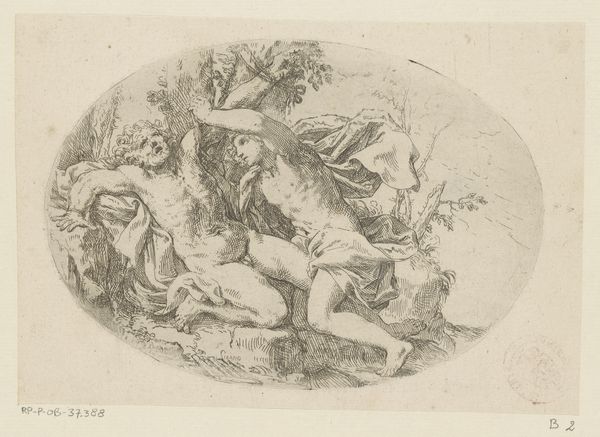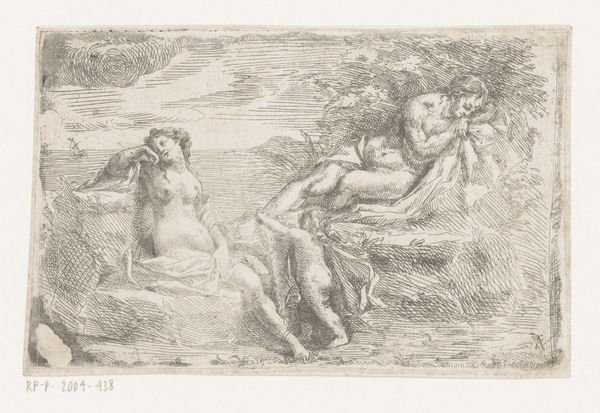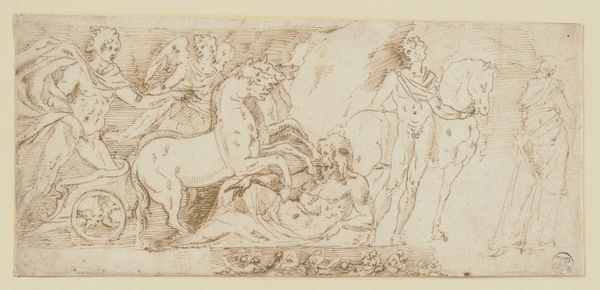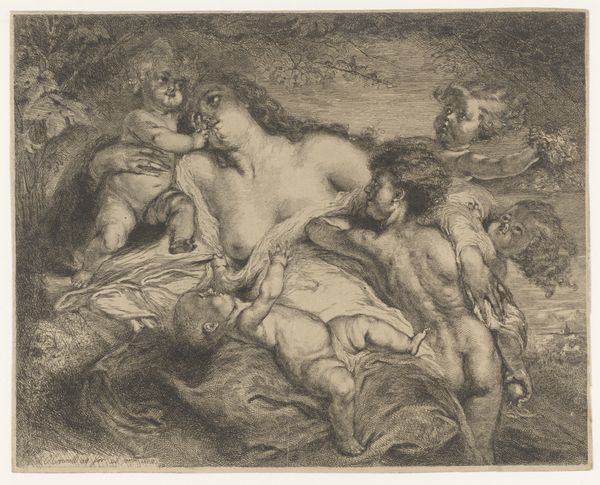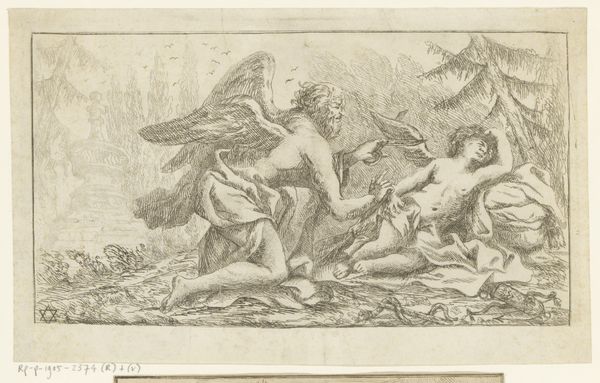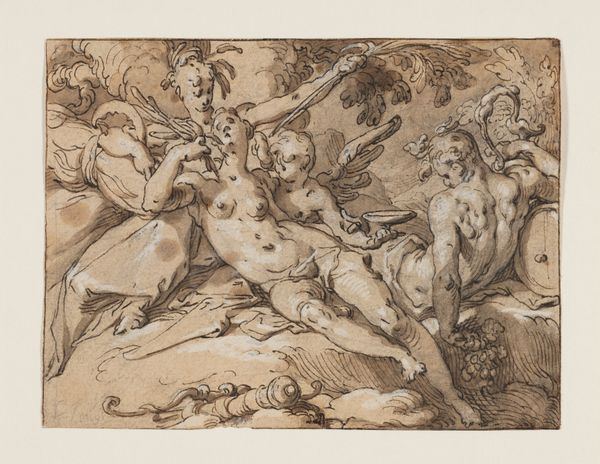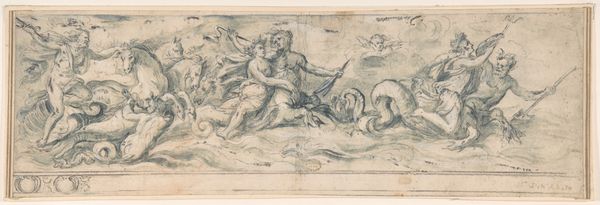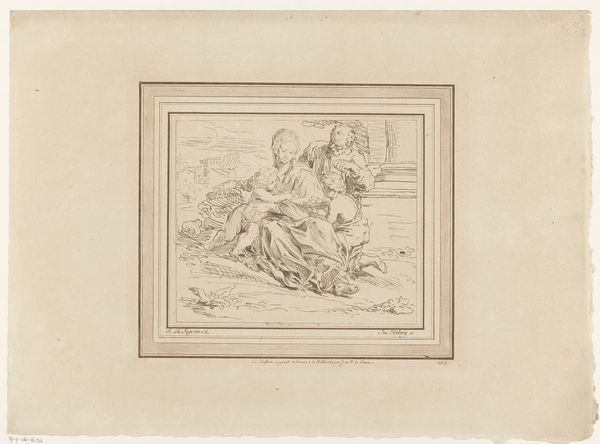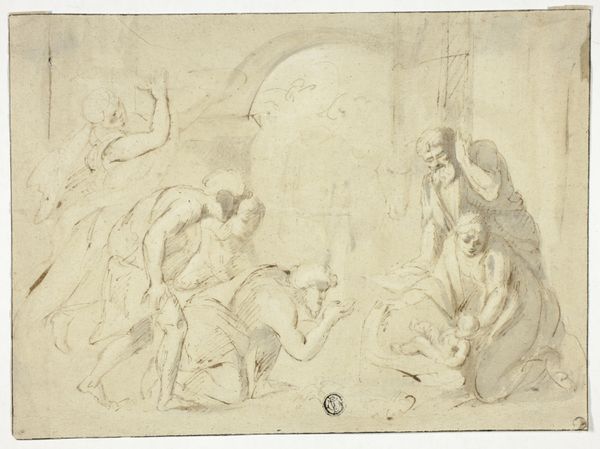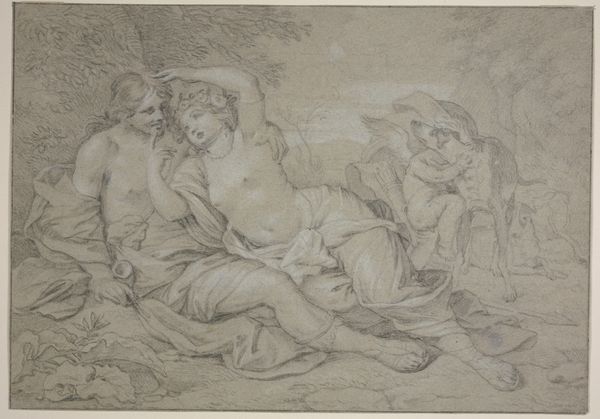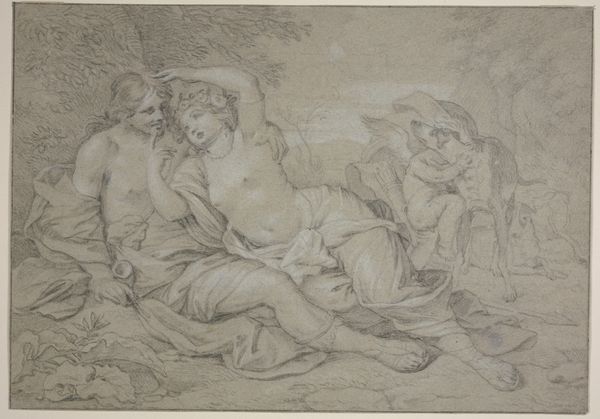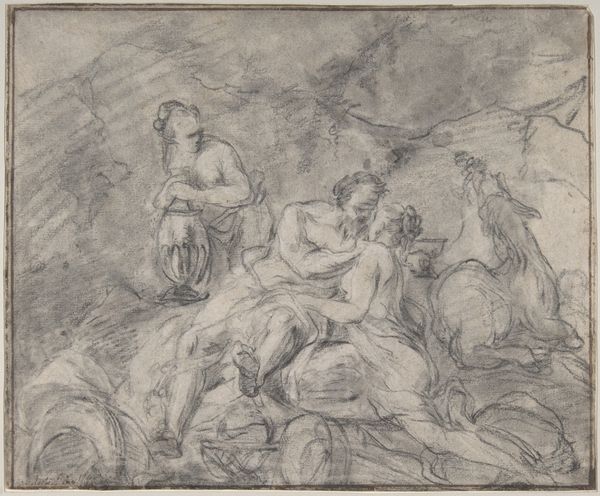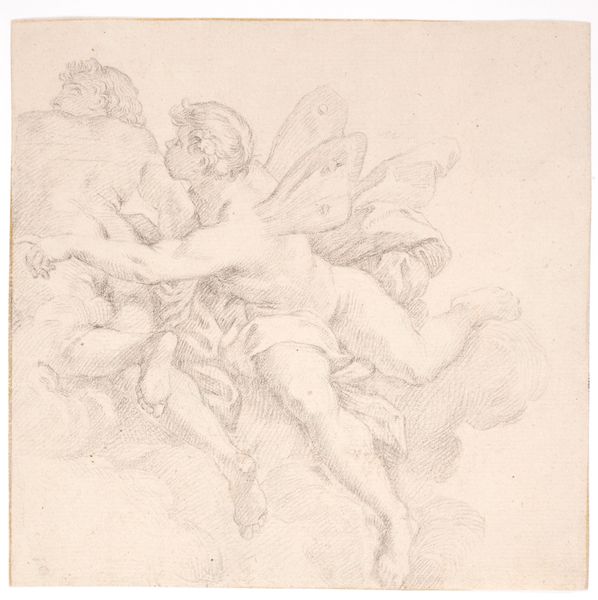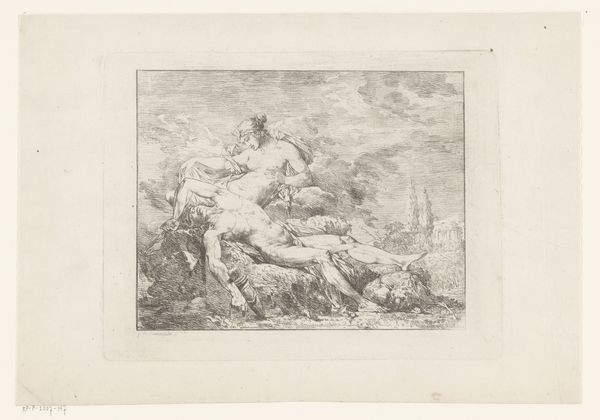
Putto at left reclining on sheaves of wheat, another at right carrying a sheave over his shoulder, an allegory of the seasons (Summer), an oval composition 1650 - 1680
0:00
0:00
drawing, print
#
pencil drawn
#
drawing
#
allegory
# print
#
pencil sketch
#
landscape
#
figuration
#
11_renaissance
#
pencil drawing
#
history-painting
Dimensions: plate: 5 3/16 x 6 7/8 in. (13.2 x 17.5 cm) sheet: 7 1/4 x 9 1/2 in. (18.4 x 24.1 cm)
Copyright: Public Domain
Curator: This drawing from between 1650 and 1680, housed here at the Metropolitan Museum of Art, is entitled "Putto at left reclining on sheaves of wheat, another at right carrying a sheave over his shoulder, an allegory of the seasons (Summer), an oval composition." Editor: Immediately, I'm struck by the starkness of the material – it seems almost ephemeral. The delicate lines create a really soft, muted feeling despite the relatively active scene depicted. Curator: That muted quality really underscores the classical allegory. The putti, symbols of innocence, are crowned with wheat, directly referencing the bounty and harvest associated with the summer season. It’s a visualization of cyclical renewal and idealized agrarian life. Editor: Yes, and look at the implied labor too. The figure carrying the sheave is in motion, contrasting with the reclining putto. This references the work required for such a harvest. I wonder what kind of labor this image supported as an idea in that society, from an almost craft point-of-view...Was the harvest a community endeavor, a marker of communal success, or more associated with the sweat of those lower in the social order? Curator: Absolutely. While ostensibly celebrating the season, it indirectly acknowledges the social structures underlying its prosperity. The wheat itself becomes symbolic of communal labor. Think of how deeply grain has been entwined with rituals and offerings over millennia. This continues a long visual lineage. Editor: It does. There's an inherent connection between this rather graceful print and, perhaps surprisingly, the implements and manual techniques needed for crop management at the time. Even today we grapple with food production. And I must also admire the craft; so much narrative drawn from what appears to be a fairly simple series of gestural marks on the paper. Curator: I concur; the piece continues to echo today. Examining how such imagery persists and adapts in our contemporary cultural consciousness allows us a glimpse into an array of complex socio-historical roots. Editor: Indeed, this exploration into material and the image-making process has me thinking differently about the piece overall!
Comments
No comments
Be the first to comment and join the conversation on the ultimate creative platform.
